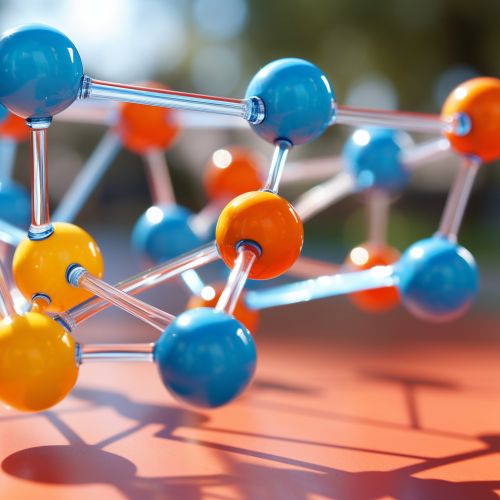Amino acid
Introduction
Amino acids are organic compounds that combine to form proteins. Amino acids and proteins are fundamental components of life. When proteins are digested or broken down, amino acids are left. The human body uses amino acids to make proteins to help the body:
- Break down food - Grow - Repair body tissue - Perform many other body functions
Amino acids can also be used as a source of energy by the body.


Structure of Amino Acids
Amino acids are made up of a carboxyl group, an amino group, and a side chain that varies between different amino acids. These groups define the structure and function of the different types of amino acids.
Carboxyl Group
The carboxyl group (COOH) is a functional group that consists of a carbon atom double-bonded to an oxygen atom and single-bonded to a hydroxyl group. This group is very polar and acidic.
Amino Group
The amino group (NH2) is a functional group that consists of a nitrogen atom attached by single bonds to hydrogen atoms. This group is basic and polar.
Side Chain
The side chain, also known as the R group, is different for each amino acid. The chemical nature of the side chain determines the nature of the amino acid (whether it is acidic, basic, polar or nonpolar).
Classification of Amino Acids
Amino acids can be classified into three general types:
- Essential amino acids - Nonessential amino acids - Conditional amino acids
Essential Amino Acids
Essential amino acids cannot be made by the body. As a result, they must come from food. The nine essential amino acids are: histidine, isoleucine, leucine, lysine, methionine, phenylalanine, threonine, tryptophan, and valine.
Nonessential Amino Acids
Nonessential means that our bodies produce an amino acid, even if we do not get it from the food we eat. Nonessential amino acids include: alanine, asparagine, aspartic acid, and glutamic acid.
Conditional Amino Acids
Conditional amino acids are usually not essential, except in times of illness and stress. Conditional amino acids include: arginine, cysteine, glutamine, tyrosine, glycine, ornithine, proline, and serine.
Functions of Amino Acids
Amino acids play central roles both as building blocks of proteins and as intermediates in metabolism. The precise amino acid content, and the sequence of those amino acids, of a specific protein, is determined by the sequence of the bases in the gene that encodes that protein. The chemical properties of the amino acids of proteins determine the biological activity of the protein.
Protein Biosynthesis
Proteins not only catalyze all (or most) of the reactions in living cells, they control virtually all cellular processes. Proteins are made from amino acids. If we lack essential amino acids, we will not produce the proteins necessary for our bodies to function correctly.
Neurotransmitter Regulation
Amino acids can also be used to create neurotransmitters which are essential for normal brain function. If we do not have enough of a particular amino acid, the corresponding neurotransmitter may be low, which can lead to mood disorders such as depression and anxiety.
Immune Function
Amino acids play a significant role in the immune response, which includes the production of immune cells in the blood and the signaling molecules that coordinate the immune response.
Amino Acid Metabolism
Amino acid metabolism refers to the process of breaking down and synthesizing amino acids. This process is critical for the production of energy, the synthesis of new proteins, and the production of various molecules necessary for life.
Catabolism
Catabolism is the process of breaking down amino acids. This process begins in the stomach and intestines. During digestion, proteins are broken down into amino acids. The amino acids are then absorbed into the bloodstream and transported to cells throughout the body.
Anabolism
Anabolism is the process of synthesizing new proteins from amino acids. This process occurs in the ribosomes of cells. The sequence of the amino acid chain causes the polypeptide to fold into a shape that is biologically active.
Conclusion
Amino acids are essential for life, and they play a crucial role in various biological processes. Understanding the structure, classification, function, and metabolism of amino acids can provide insight into health, disease, and life processes at the molecular level.
